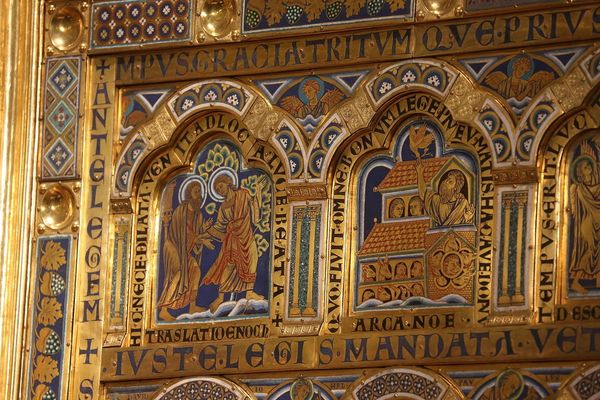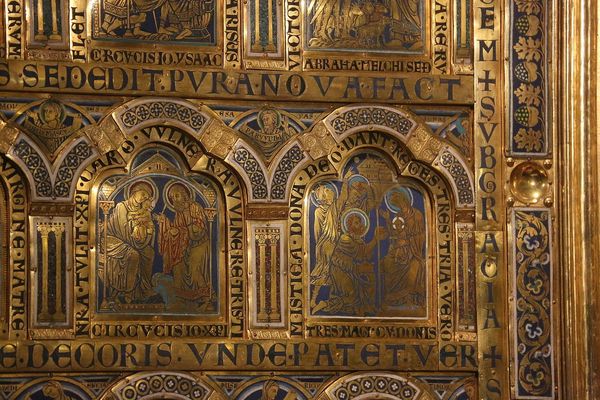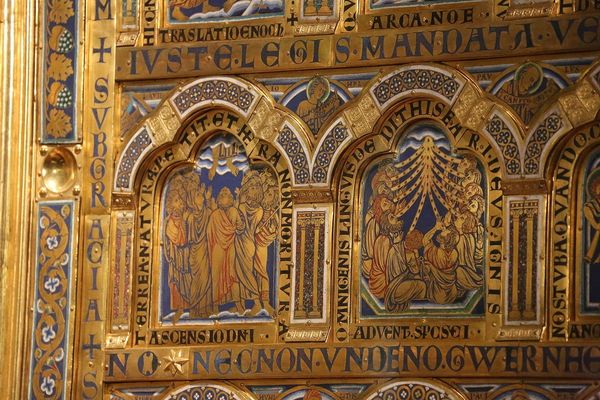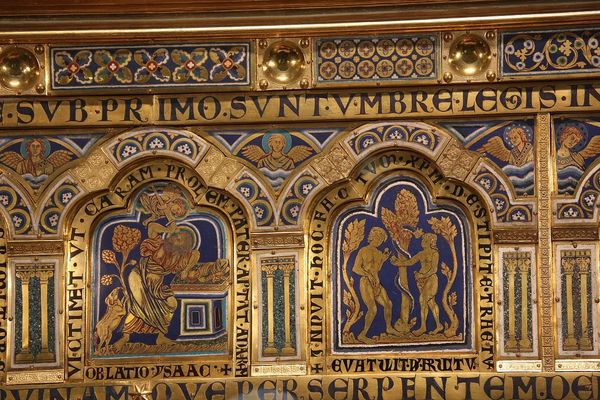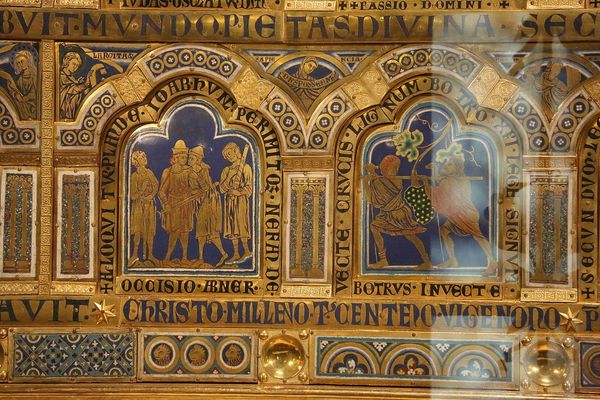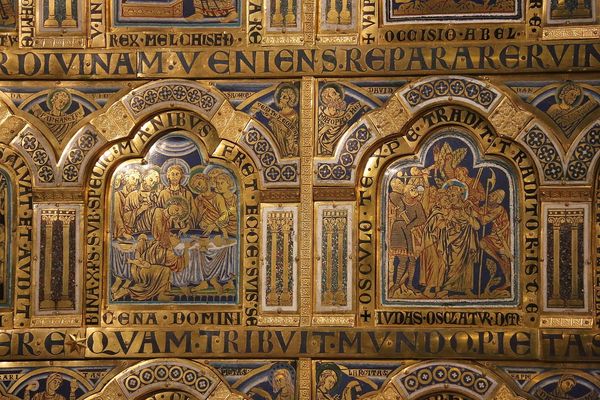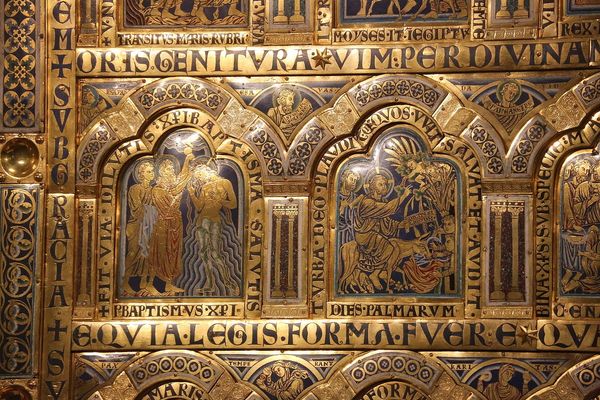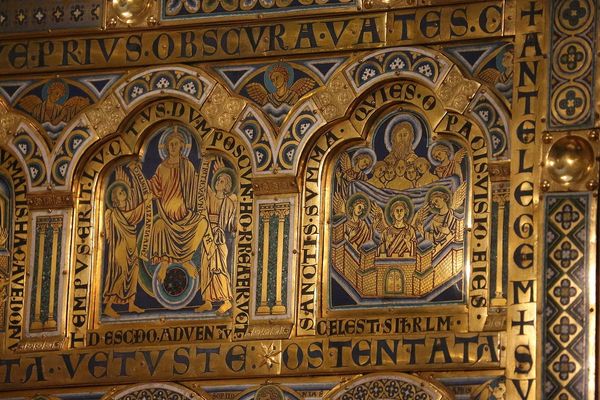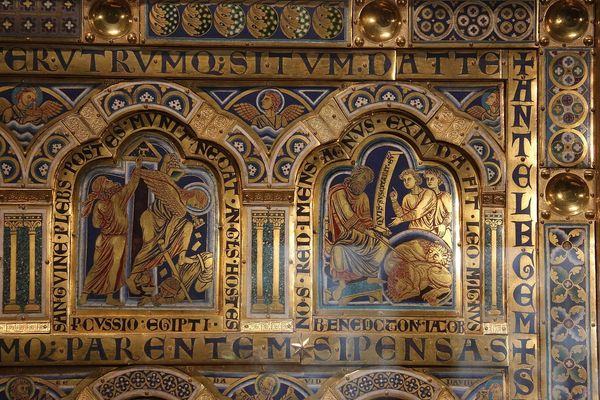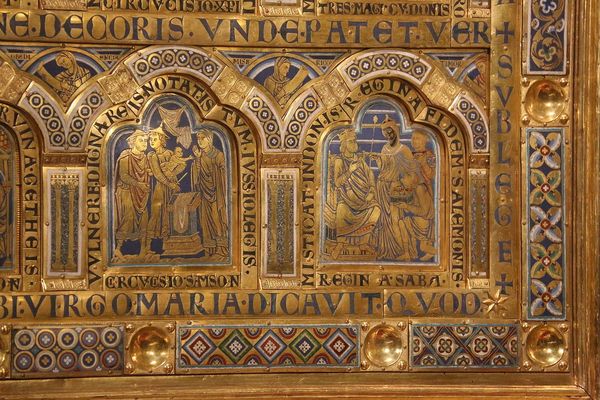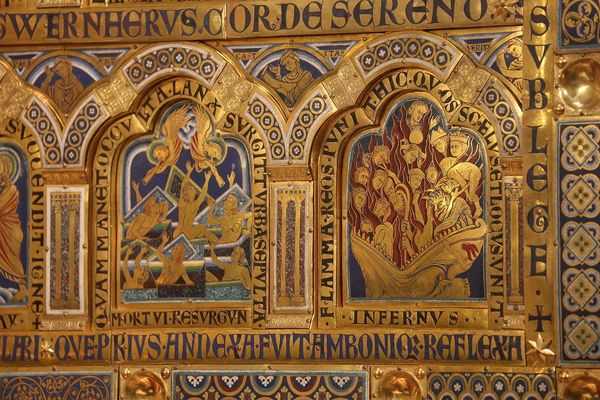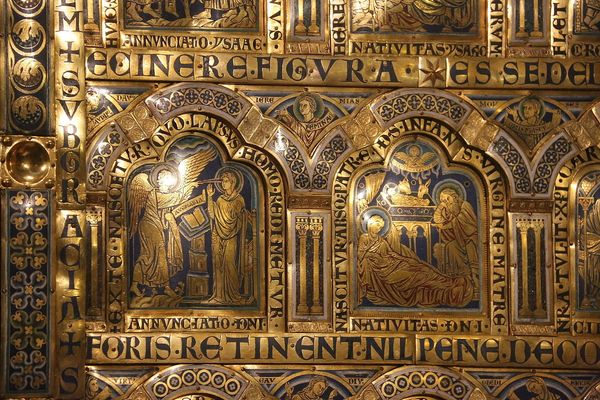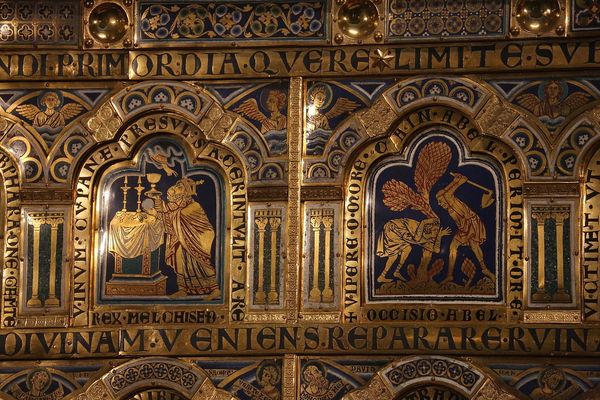
mosaic, carving, metal, glass, enamel, mural, architecture
#
mosaic
#
byzantine-art
#
medieval
#
carving
#
narrative-art
#
metal
#
figuration
#
glass
#
enamel
#
history-painting
#
mural
#
architecture
Copyright: Public domain
Curator: Let's delve into the Klosterneuburg Altar, a masterpiece completed around 1181 by Nicholas of Verdun. It showcases a blend of Byzantine artistic elements realized through various media like enamel, mosaic, and metalwork. What catches your eye? Editor: Honestly, the overwhelming amount of gold is pretty dazzling. It's a dense collection of narratives, and all that shimmering makes it feel almost feverish—a bit like sensory overload! Is it meant to impress with its opulence? Curator: In part, yes. Remember the context; this was crafted for an Augustinian monastery near Vienna. Its patrons sought to project authority and devotion. The altar presents salvation history typologically, connecting events from the Old and New Testaments as prophecies and fulfillments. This juxtaposition legitimizes Christian doctrine. Editor: I see that, especially with the inscription that links images together. There is Abel and the Sacrifice of Isaac together in that pattern. But the arrangement seems to suggest a very hierarchical worldview— a kind of top-down approach to storytelling where every element is strategically placed to drive home a singular message. Curator: Precisely. Consider also the Romanesque architecture in those times which informs the solid framework enclosing each narrative field and how it’s reminiscent of reliquaries and the symbolic power of precious materials in medieval Europe. This altar's inherent structure and composition reinforces these historical power dynamics. Editor: As an artist, though, I can appreciate the skill— especially the intricate enamel work and how it brings certain scenes to life in an emotional sense. Look at the figures' expressions, some displaying fear, reverence, or defiance. Regardless of religious intent, someone cared deeply to imprint those human moments on metal. Curator: Absolutely. While intended as an ideological statement, artistry and human experience intermingle here, reflecting the craftsmanship of the era while fulfilling socio-political directives. Editor: Looking closer makes you think about who gets to tell the stories—and whose stories are left out. But still, as a piece, there is so much contained on this artwork from different trades of that period! It is a good testament for their memory. Curator: It definitely leaves you pondering its meaning and what art in medieval society represents.
Comments
No comments
Be the first to comment and join the conversation on the ultimate creative platform.
